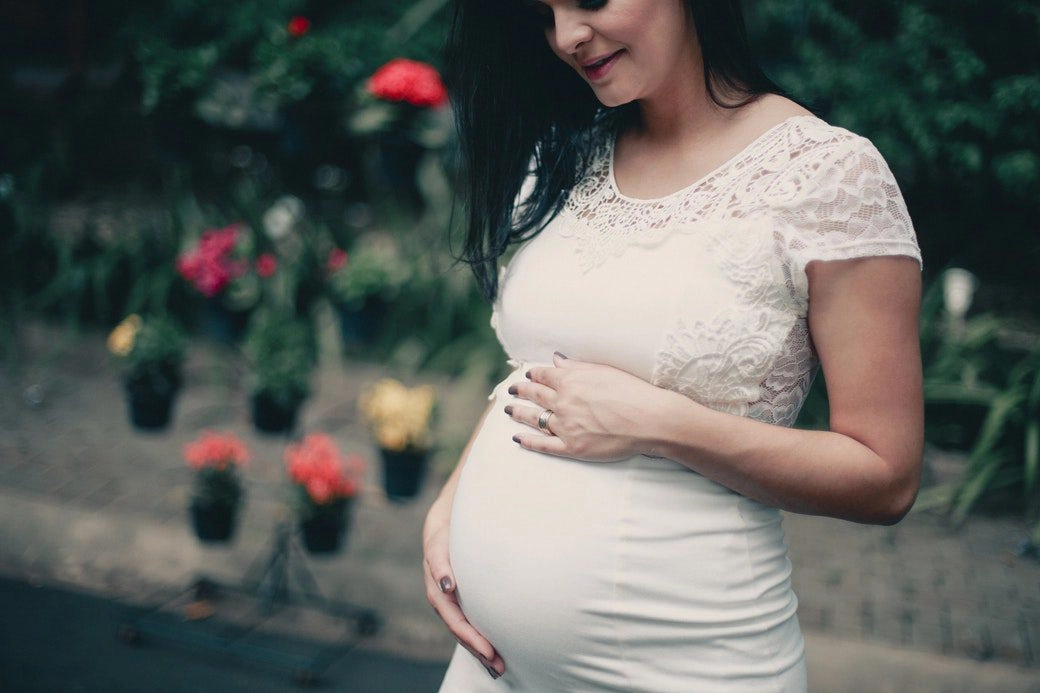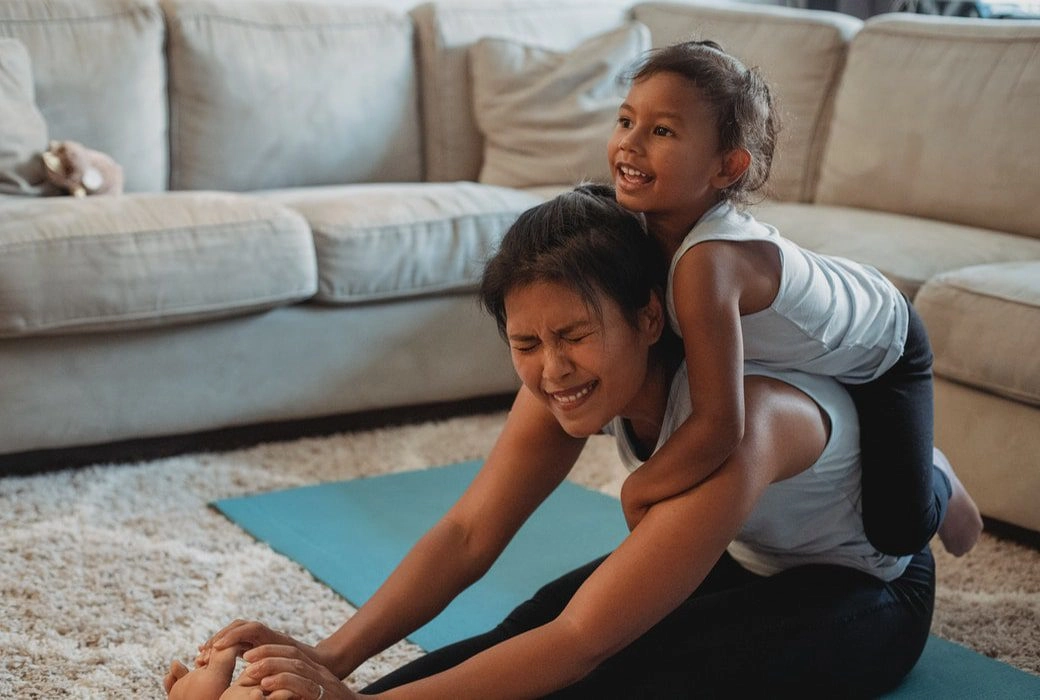After pregnancy many new moms expect the aches and pains to go away quickly. But it takes time and good practices for the body to get back to normal. And the new baby often means that moms aren’t paying much attention to themselves. But there are ways to get rid of postpartum back pain without neglecting your parental duties. Read on to discover how.
Postpartum back pain is caused by the stress and changes that the body undergoes during and after pregnancy. Unfortunately, it can be exacerbated by bad habits and lack of exercise. Getting rid of it is simply a matter of practicing good habits, exercising, and seeking proper assistance.
What Causes Postpartum Back Pain?
There are several possible causes of postpartum back pain. Pregnancy is anything but easy on a woman’s body, and back pain is one of the most common side-effects, even several months after giving birth. Here are some of the most common causes of postpartum back pain.
1) Adjusted center of gravity.
As the baby grows, you have to adjust your center of gravity, which often puts stress on the back.
2) Weakened core muscles.
Stretched and weakened ab muscles, which help the back support the upper body, are no longer able to pull their weight.
3) Pelvic tilt.
Pregnancy necessarily causes anterior pelvic tilt, which puts stress on the lower back.
4) Hormones.
Pregnancy hormones cause the ligaments and joints to stretch and become more malleable for birth. This in and of itself can cause pain all up the spine and among other joints.
Lower Back Pain 6 Months After Pregnancy
As mentioned above, it takes time for the body to recover and return to “normal” after pregnancy. Many times women notice a difference within 3 months, but it’s common for low back pain to persist for 6 months or more after pregnancy. This is generally how long it takes for the pregnancy hormones to subside and the joints to get back to normal.
Women who had a particularly painful or rough birth may experience postpartum back pain for longer. However, there are some things you can do to help relieve this pain:
- Avoid lifting heavy things, especially when bending over and arching your back. (Yes, this includes your baby!)
- Put your feet up whenever you sit down.
- Get a massage, preferably at the direction of a chiropractor.
- Try gentle stretching and core strengthening exercises.

Back Pain 1 Year After Pregnancy
Some women experience back pain a year after pregnancy. If you are still experiencing postpartum back pain a year after giving birth, it may be time to see a professional for relief.
Chiropractic care helps to relieve postpartum back pain in a safe, effective, and non-invasive manner. You can also talk to your general practitioner about ways to relieve the pain without prescription medication. Some women’s bodies are simply slow to recovery, while others may be practicing poor habits that keep them from relieving the pain.
Back Pain After C-Section
It’s common for women who have had a cesarean section to experience postpartum back pain. The hormonal changes the body goes through during pregnancy can still cause back pain, even if you didn’t deliver the baby through the birth canal.
Any weight you gained during the pregnancy can also put stress on the back. As can improperly lifting the baby and breastfeeding with bad posture. Luckily, we’ve outlined some things below that will work to relieve your back pain, even if you had a C-section.
See A Doctor Immediately If . . .
Severe and constant back pain is a cause for concern. You should see a doctor for your postpartum back pain if:
- The pain gets worse over time, not better.
- You experience numbness or weakness that it becomes an inability to use your legs.
- Your back pain prevents you from sleeping or moving around.
Postpartum Back Pain Relief
There are some tried-and-true best practices you can follow to relieve postpartum back pain. These include proper lifting techniques, getting enough rest, seeing a chiropractor, maintaining proper posture, and gradually getting back into an exercise routine. Let’s take a look at them all in turn.
Chiropractor For Postpartum Back Pain
Chiropractic care has been successfully helping women relieve their postpartum back pain for years. Chiropractic is safe after surgery, so if you’ve had a C-section, you can have confidence that chiropractic care can help you. Since many of the changes women experience during pregnancy involve the musculoskeletal system, chiropractors are in an ideal position to help them. After all, chiropractors are specialists in the musculoskeletal system. They can help put the body back into alignment, helping to fix pelvic tilt and spinal misalignment that happen during and pregnancy.
In fact, many women visit chiropractors during their pregnancy to help ensure a smooth and safe birth as well as to keep their bodies in alignment to help prevent pain during and after pregnancy. Visiting a chiropractor during pregnancy is very safe and can be beneficial for both the baby and the mother.
What Does Postpartum Chiropractic Entail?
Chiropractors have a number of different modalities that can help relieve postpartum back pain. These include:
- Spinal adjustments.
- Hip adjustments.
- Chiropractic massage.
- Anti-inflammation techniques like ultrasound and cold laser therapy.
- Posture analysis and tips.
- Nutrition and weight loss advice.
Studies have shown that chiropractic care is effective for postpartum back pain. And insurance usually pays for most or all of chiropractic visits without the need to be referred by a physician.
Adopting Good Habits For Postpartum Back Pain Relief
One of the best things you can do to relieve postpartum back pain is to mind your back. It’s incredibly common for mothers to forget about themselves and focus all their energy and attention on the new baby. While this is understandable, it’s not doing you any favors. Here are some good habits to adopt immediately.
- Avoid lifting heavy things for a few months. And when you do lift anything (even the baby), make sure you’re not arching your back. Keep a neutral spine, engage the core, and lift with the legs. Bring the baby or item close to your chest before lifting.
- Keep your back straight and shoulders aligned when breastfeeding. One of the best ways to do this is by sitting down in a sturdy chair, placing a pillow in your lap, and laying the baby on the pillow as he or she feeds. This way you can still keep your arms around the baby, but most of the weight is on the pillow. This gives your back a much-needed break and allows you to focus on feeding the baby.
- Posture is important. Especially when carrying the new bundle of joy. The key is to always keep a straight spine. If you carry your baby on your hip, make sure you’re not cocking that hip out, as this will do your back no favors. Find ways to carry the baby without overly stressing your back.
Stretching and Gradually Increasing Your Exercise
Once you get the okay from the doctor to start getting active again, a little bit goes a long way. In fact, getting active and stretching daily are the best things you can do to relieve your back pain. But not just any exercises will do. Core stabilization and posture correction exercises work best to alleviate postpartum back pain. Here are a few that are ideal for relieving postpartum back pain.
1) Posterior Pelvic Tilts (Core Stabilization)
- Begin by lying on a floor (on a yoga mat or carpet) with your knees bent and your feet flat.
- Push your belly toward the floor, flattening your low back against the floor as you do so.
- Hold this for 5 to 8 seconds, making sure to engage your core the whole time.
- Release. Repeat 8 to 12 times.
2) Bridge Pose (Core Stabilization)
- Begin by lying on the floor with your knees bent comfortably and your feet flat on the floor.
- Flex your glutes and engage your core to lift your hips up, creating a bridge between your knees and your upper body.
- Hold the bridge pose for 8 to 10 seconds then release slowly back to the ground.
- Repeat 10 to 12 times.
3) Deep Wall Squat (Posture Correction/Stretching)
- With your back against a wall and your feet a little wider than hip distance, slide your back down the wall and into a deep wall squat.
- Create an L with each of your arms and press the backs of them against the wall, upper arms level with your shoulders.
- Keep your chin level with the ground and the back of your neck pressed against the wall.
- Lift your hands above your head and then bring them back down so your upper arms are in line with your shoulders.
- Repeat this motion 10 to 12 times.
This will help not only your posture but it should also feel good on the lower back, stretch your hips, and promote proper pelvic positioning.
If any of these exercises cause you pain, stop doing them immediately, and focus on exercises that don’t cause you pain.
Resources:
https://www.ncbi.nlm.nih.gov/pmc/articles/PMC3306025/
https://www.sciencedirect.com/science/article/abs/pii/S1526952305004435
https://www.rmj.org.pk/fulltext/27-1360296852.pdf









